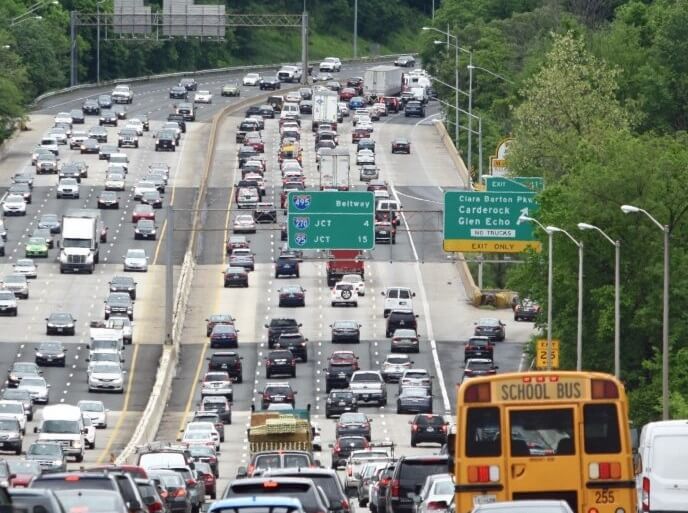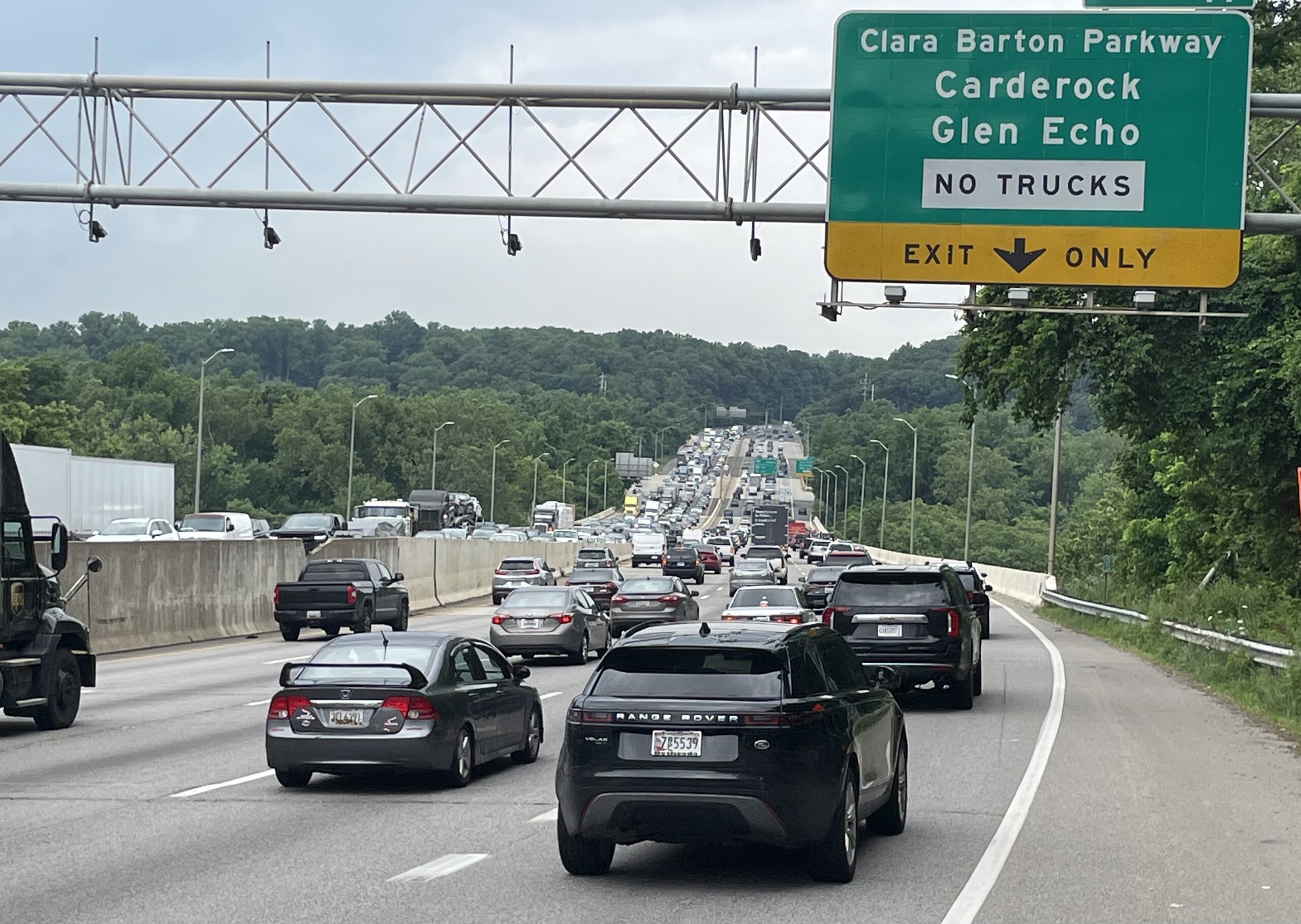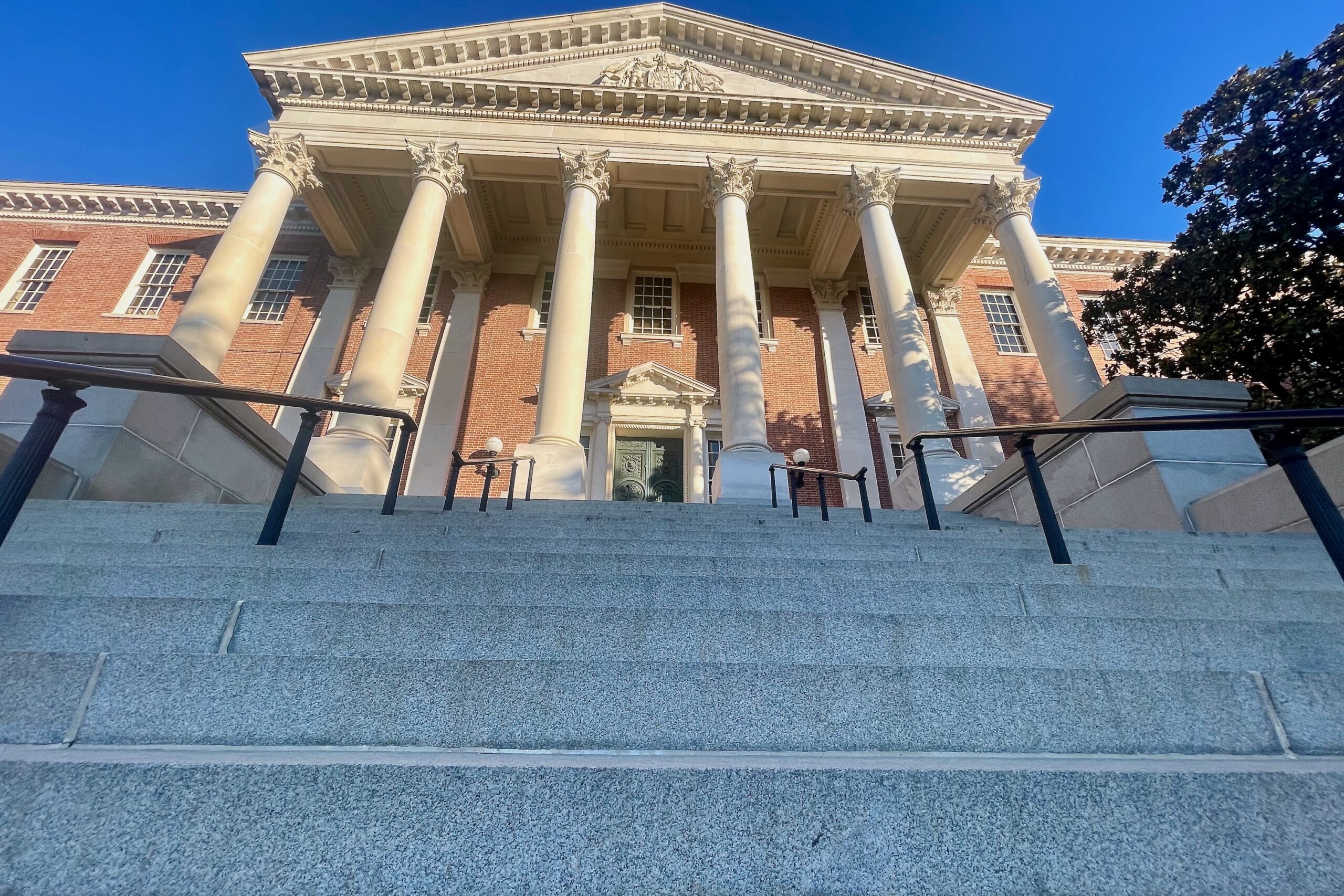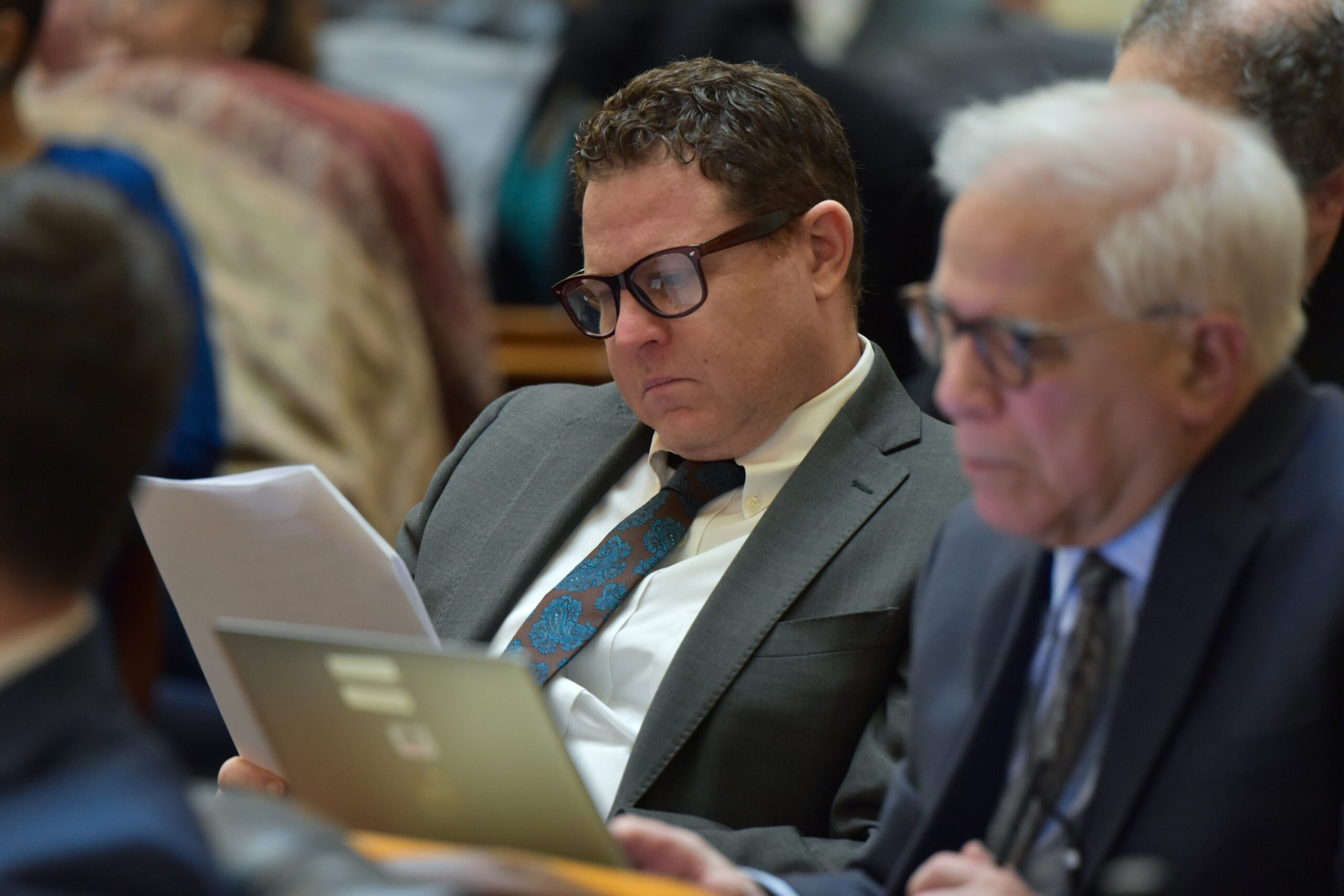Opinion: Less Congestion, New Bridge, New Jobs. It’s an ‘Everybody Wins’ Scenario

By Michael Sakata
The writer is president and CEO of the Maryland Transportation Builders & Materials Association.
Amid the recent debate over Maryland’s plan to replace the American Legion Bridge and extend express lanes on the Capital Beltway and Interstate 270, an important constituency is too often overlooked: The congestion-weary commuting public that takes 300,000 daily trips on this stretch of highway.
Providing them with long-awaited relief is why the Maryland Board of Public Works must approve a contract to build the project at its meeting Wednesday.
This stretch of the Beltway has been among the most heavily traveled and congested segments of our highway network for decades. The American Legion Bridge provides the only direct connection between the region’s two largest counties – Fairfax and Montgomery counties, which comprise nearly 40% of the region’s population and jobs. Without infrastructure funding support, the safety of the mobile public – the family driving to a soccer game, the truck driver delivering essential goods, emergency personnel – is at risk.
With the bridge approaching its 60th birthday, all parties – including those who oppose the project – agree that simply rehabilitating the ailing structure is insufficient. The crossing must be replaced with a safer and more secure structure that will properly serve current and future travel needs.
Simply put, the project offers an “everybody wins” scenario.
Phase 1, replacement and expansion of the American Legion Bridge from I-270 to I-70, will vastly improve the infrastructure for Maryland drivers, provide 7,500 high-paying, high-quality jobs; cut down on emissions and pollution; and significantly decrease travel times.
Express lanes work – whether for those who choose to pay the toll, those who use the less-congested free lanes or carpoolers who use the express lanes free of charge. Virginia’s express lanes resulted in a boost in carpooling and a 20% reduction in traffic in the general-purpose lanes, and the Maryland Department of Transportation’s models project a 30% overall reduction in general-purpose lanes, with a 25% reduction in afternoon traffic.
Further, MDOT is committed to a bike and pedestrian connection over the American Legion Bridge and Potomac River to the C&O Canal.
Contrary to the project’s detractors, MDOT is prioritizing Maryland’s economy, its people and their safety – not cars and hot lanes.
The state has already been moving forward with private money that will pay for the nearly $6 billion in infrastructure improvements at no taxpayer expense. If given final approval, citizens will be given – at no net cost – a new American Legion Bridge, including four new lanes on I-495 and two new lanes on I-270, in addition to the proposed $300 million for transit, just in Phase 1 South, with even more transit investment when the northern sections of I-270 move forward.
But none of that will happen if we allow short-term politics to derail sound, long-term planning.
Time is of the essence. While there was a brief period during the pandemic last year when many residents worked from home and area traffic was lighter, we cannot use the pandemic model when considering the next 20 to 30 years.
Per the National Capital Region’s Transportation Planning Board, an additional 1.2 million people could be living in the Washington region by 2045 – adding to our traffic and gridlock concerns.
As the latest The Road Information Program, or TRIP, report states, Maryland ranks as the second most congested urban interstate, and 83% of its urban Interstate highways are considered congested during peak hours.
Delaying action will only exacerbate an existing crisis, all to the detriment of every citizen seeking congestion relief. Delays are extremely expensive. It is estimated that based on long-term construction cost inflation and the Construction Cost Index, each month of delay costs approximately $16.7 million.
Should this project not move forward, the American Legion Bridge still needs to be fixed, and there will be no congestion relief. The state would be forced to rethink which projects will suffer, as this project is set to offset $1.2 billion to $1.3 billion in public funding needed just to maintain existing roads in a state of good repair.
Given all the good that will come from the American Legion Bridge I-270 to I-70 relief plan, Maryland Transportation Builders & Materials Association members are hopeful this project will be allowed to proceed, and construction of the new bridge and toll lanes will begin soon.
The state of Maryland and its residents will safely enjoy less congestion, a new bridge and new jobs – a win-win for the state, its residents and area commuters.





 Creative Commons Attribution
Creative Commons Attribution